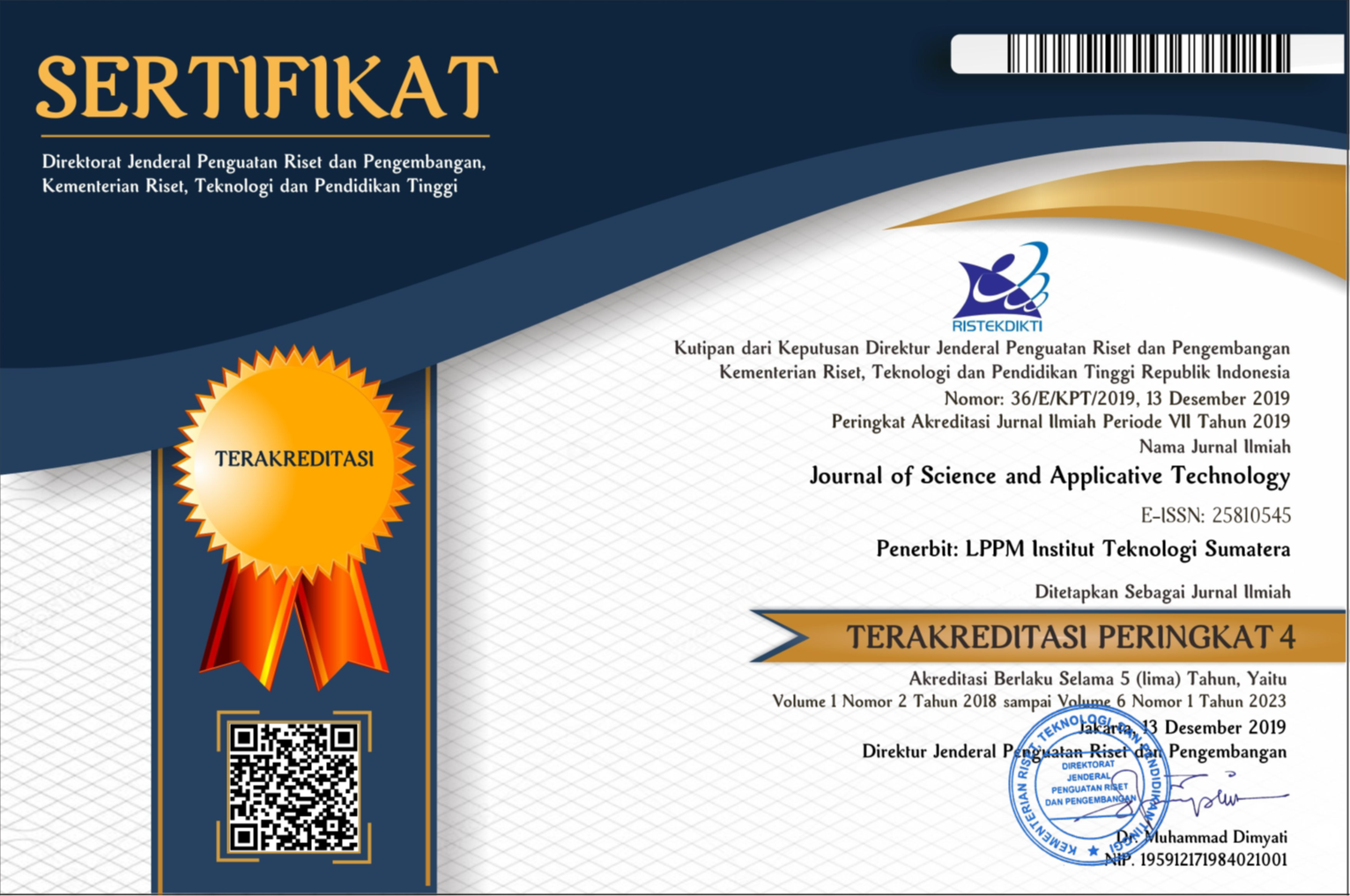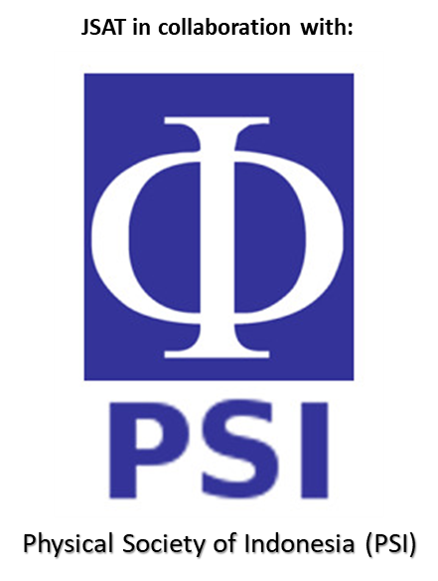Analysis of Community Adaptation Strategies Factors for Ecosystem-Based Disaster Risk Reduction in the Upper Merawu Watershed
Abstract
The Merawu Watershed is one of the critical watersheds in Indonesia. This watershed is located in Banjarnegara Regency which has an altitude of 1000 meters above sea level with high rainfall intensity. The type of soil in Banjarnegara Regency is mostly ultisol and inceptisol soil, making the area vulnerable to landslides. Under these conditions, intensive agriculture is mostly carried out by the surrounding community, with the main commodity being planted is potatoes. Planting without paying attention to soil and water conservation techniques on steep land and spraying pesticides with high intensity can trigger erosion, landslides, and environmental pollution. The hamlets of Tamansari and Penanggungan are prone to erosion, landslides, and environmental pollution due to intensive agriculture. But, the adaptation strategy adopted by the community is still lacking. Therefore, it is necessary to research the factors that influence community adaptation strategies in ecosystem-based disaster risk reduction. This study aims to identify the factors that influence the adaptation strategy. The method used in this research is the logit model method. The respondents used in this study were 30 from the Tamansari Hamlet and the Penanggungan Hamlet. The results showed that the adaptation strategies factors for erosion are land area and household income, while landslides are assets and location. There are no variables that have a significant effect on the community's adaptation strategy to environmental pollution.
Downloads
References
[2] B. Harjadi, Tindakan Konservasi Menyelamatkan Produktivitas Lahan Dan Ketersediaan Air Dalam Tanah. Yogyakarta: Penerbit Deepublish, 2020.
[3] P. Dyah Susanti, A. Miardini, and B. Harjadi, “ANALISIS KERENTANAN TANAH LONGSOR SEBAGAI DASAR MITIGASI DI KABUPATEN BANJARNEGARA (Vulnerability analysis as a basic for landslide mitigation in Banjarnegara Regency),” J. Penelit. Pengelolaan Drh. Aliran Sungai, vol. 1, no. 1, pp. 49–59, Apr. 2017, doi: 10.20886/jppdas.2017.1.1.49-59.
[4] N. A. Sari, H. Suryatmojo, and A. W. Utami, “Community-based adaptation for ecosystem disaster risk reduction in the Upstream Merawu Watershed, Indonesia,” IOP Conf. Ser. Earth Environ. Sci., vol. 451, no. 1, p. 012017, Mar. 2020, doi: 10.1088/1755-1315/451/1/012017.
[5] M. Priyanto, H. Toiba, and R. Hartono, “Strategi Adaptasi Perubahan Iklim: Faktor yang Mempengaruhi dan Manfaat Penerapannya,” J. Ekon. Pertan. Dan Agribisnis, vol. 5, no. 4, pp. 1169–1178, Oct. 2021, doi: 10.21776/ub.jepa.2021.005.04.19.
[6] M. Oktaviani and E. Saptutyningsih, “Pengaruh Gender dan Faktor-Faktor Lain Terhadap Willingness to Pay Petani untuk Adaptasi Dampak Perubahan Iklim di Kabupaten Bantul, Daerah Istimewa Yogyakarta,” J. Econ. Res. Soc. Sci., vol. 2, no. 2, pp. 122–129, 2018.
[7] Suwandi, L. Lukman, R. Sutarja, and W. Adiyoga, “Vegetable Innovative Technologies for Climate Change Adaptation in the Tropics,” Proceeding Int. Conf. Trop. Hortic., pp. 40–59, 2013.
[8] S. Husni, “PENDAPATAN RUMAH TANGGA NELAYAN BURUH DAN STRATEGI ADAPTASI YANG DILAKUKAN DALAM PEMENUHAN KEBUTUHAN POKOK PADA SAAT MUSIM BARAT,” J. AGRIMANSION, vol. 21, no. 1, pp. 34–47, May 2020, doi: 10.29303/agrimansion.v21i1.318.
[9] I. Pujihastuti, “Prinsip Penulisan Kuesioner Penelitian,” CEFARS J. Agribisnis Dan Pengemb. Wil., vol. 2, no. 1, 2010.
[10] L. Cohen, L. Manion, and K. Morrison, Research Methods in Education, 6th ed. London and New York: NY: Routledge Falmer, 2007.
[11] I. A. Hutomo and M. Maryono, “Model Prediksi Kawasan Rawan Bencana Tanah Longsor di Kecamatan Karangkobar,” J. Pembang. Wil. KOTA, vol. 12, no. 3, p. 303, Dec. 2016, doi: 10.14710/pwk.v12i3.12905.
[12] D. W. Hosmer, S. Lemeshow, and R. X. Sturdivant, Applied Logistic Regression, 3rd ed. Canada: John Wiley and Sons Inc, 2013.
[13] S. R. Hardoyo, M. A. Marfai, N. M. Ni’mah, R. Yustiana, Q. Zahro, and A. Halim, Strategi Adaptasi Masyarakat Dalam Menghadapi Bencana Air Laut di Kota Pekalongan. Yogyakarta: MPPDAS Fakultas Geografi UGM., 2011.
[14] S. Sunil, “Community-Based Adaptation to Coastal Hazards: A Scoping Study Among Traditional Fishing Communities in Kerala, India,” India, 2011.
[15] M. Asyrofi Haqul Lail and Suryanto, “FAKTOR-FAKTOR YANG MEMPENGARUHI KEPUTUSAN PETANI MEMBANGUN MELAKUKAN ADAPTASI PERUBAHAN IKLIM (Factors Affecting Farmers’ Decisions Making in Adaptation of Climate Change),” J. Penelit. Pengelolaan Drh. Aliran Sungai, vol. 4, no. 2, pp. 121–136, Oct. 2020, doi: 10.20886/jppdas.2020.4.2.121-136.
[16] R. Yuristia, “ANALISIS PENDAPATAN DAN PENGELUARAN RUMAH TANGGA PETANI PADI SAWAH DI KECAMATAN SAWANG KABUPATEN ACEH UTARA,” vol. 15, no. 1, p. 8, 2021.
[17] D. O. Suparwata, “PANDANGAN MASYARAKAT PINGGIRAN HUTAN TERHADAP PROGRAM PENGEMBANGAN AGROFORESTRI,” vol. 15, no. 1, pp. 47–62, 2018.
[18] S. Kuyah et al., “Agroforestry delivers a win-win solution for ecosystem services in sub-Saharan Africa. A meta-analysis,” Agron. Sustain. Dev., vol. 39, no. 5, p. 47, Oct. 2019, doi: 10.1007/s13593-019-0589-8.
[19] X. Zhu et al., “Reductions in water, soil and nutrient losses and pesticide pollution in agroforestry practices: a review of evidence and processes,” Plant Soil, vol. 453, no. 1–2, pp. 45–86, Aug. 2020, doi: 10.1007/s11104-019-04377-3.
Copyright (c) 2023 Journal of Science and Applicative Technology

This work is licensed under a Creative Commons Attribution-NonCommercial 4.0 International License.
All the content on Journal of Science and Applicative Technology (JSAT) may be used under the terms of the Creative Commons Attribution-NonCommercial 4.0 International License.
You are free to:
- Share - copy and redistribute the material in any medium or format
- Adapt - remix, transform, and build upon the material
Under the following terms:
- Attribution - You must give appropriate credit, provide a link to the license, and indicate if changes were made. You may do so in any reasonable manner, but not in any way that suggests the licensor endorses you or your use.
- NonCommercial - You may not use the material for commercial purposes.
- No additional restrictions - You may not apply legal terms or technological measures that legally restrict others from doing anything the license permits.





















